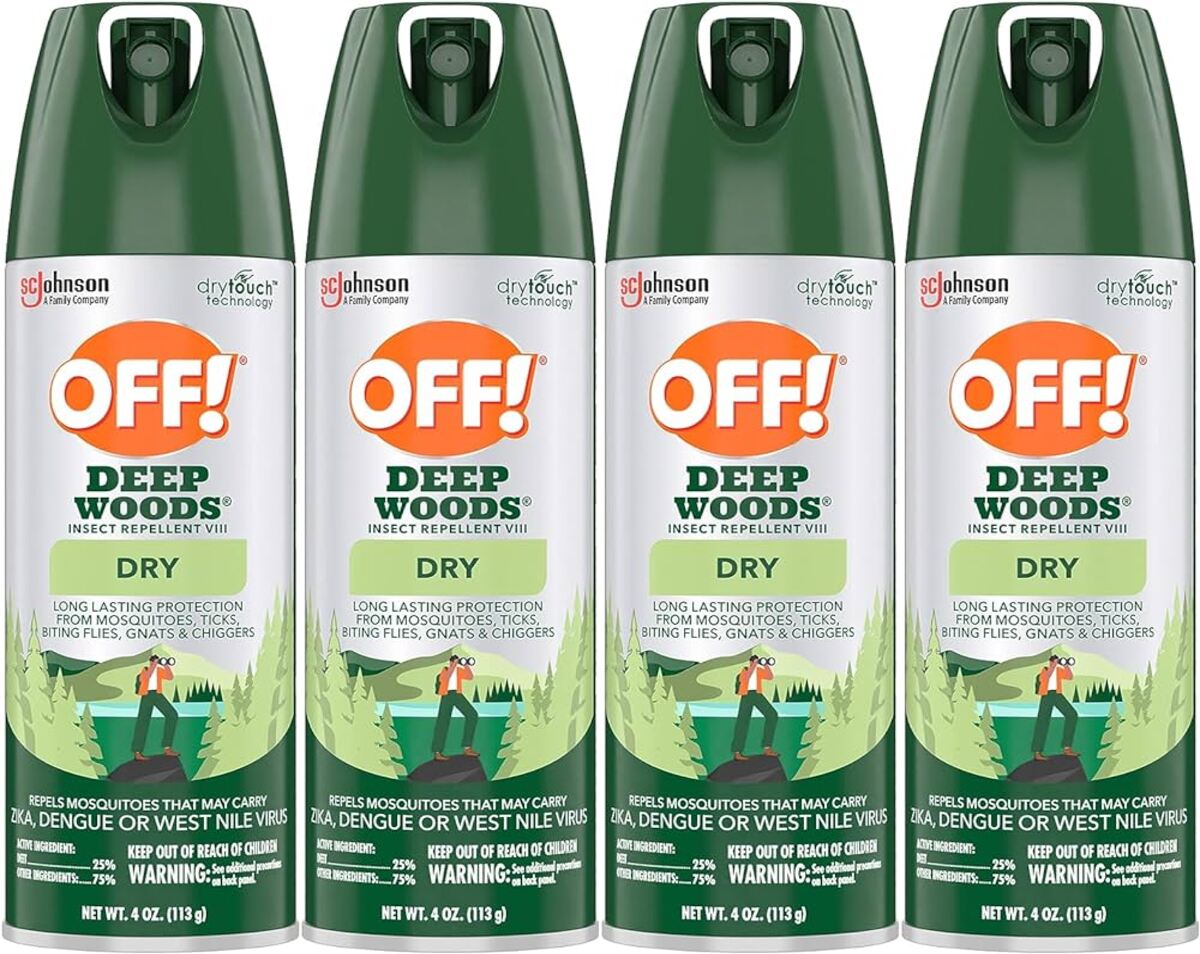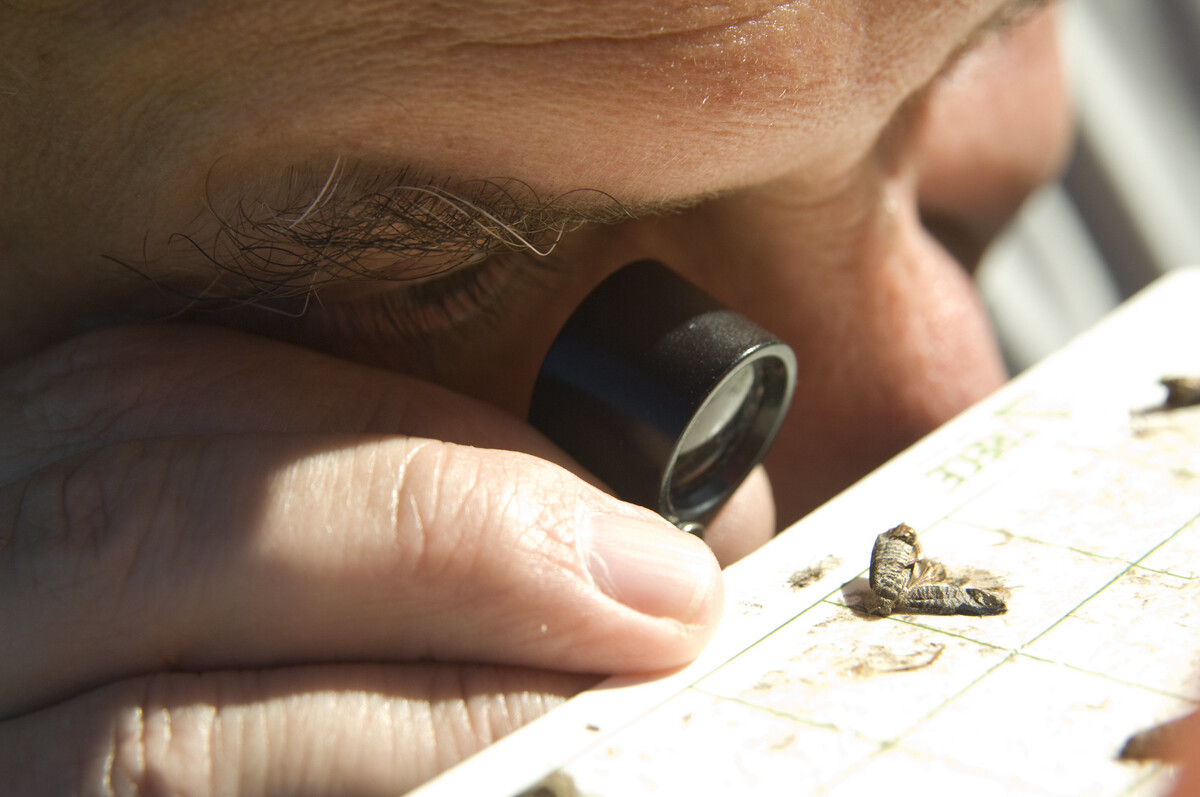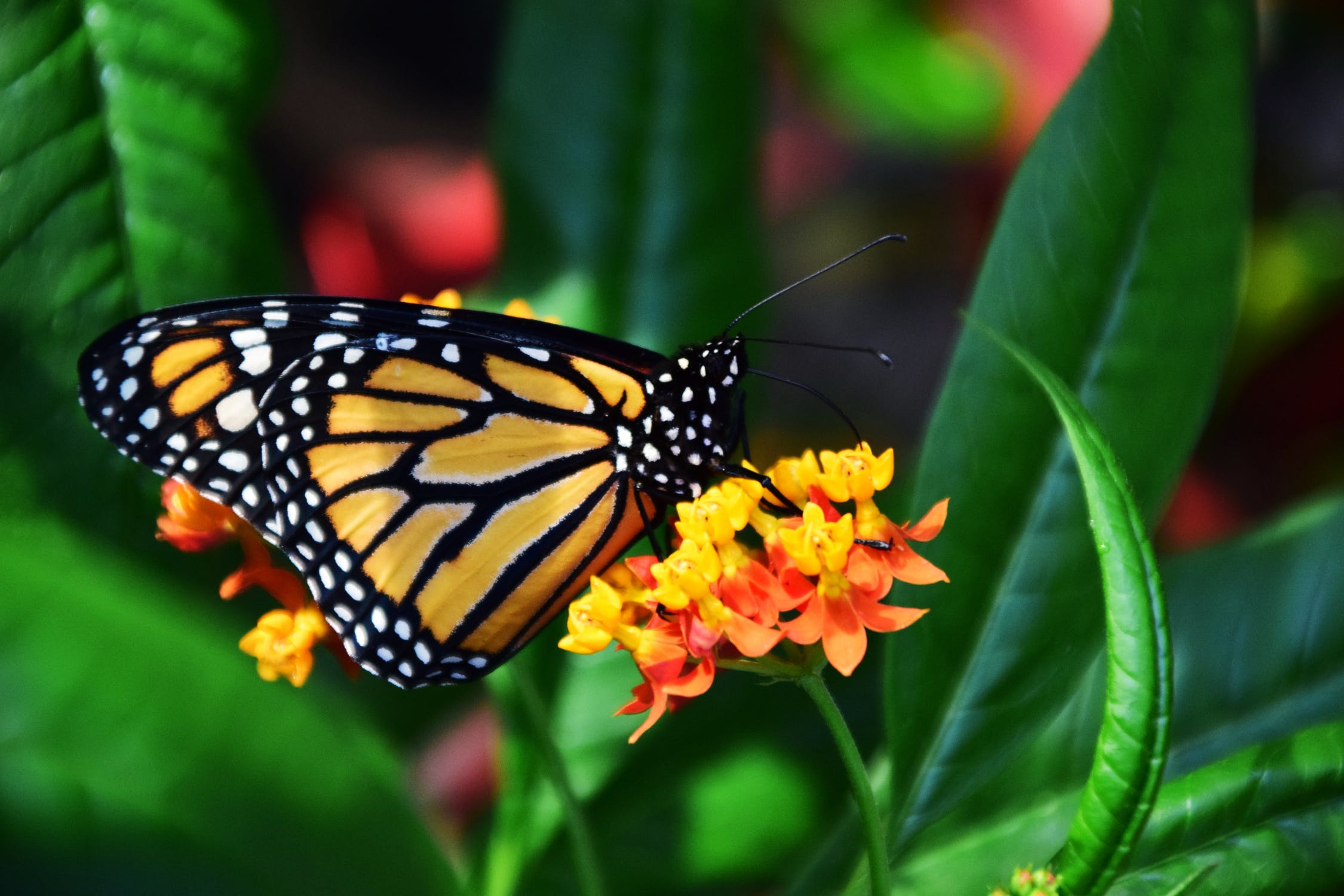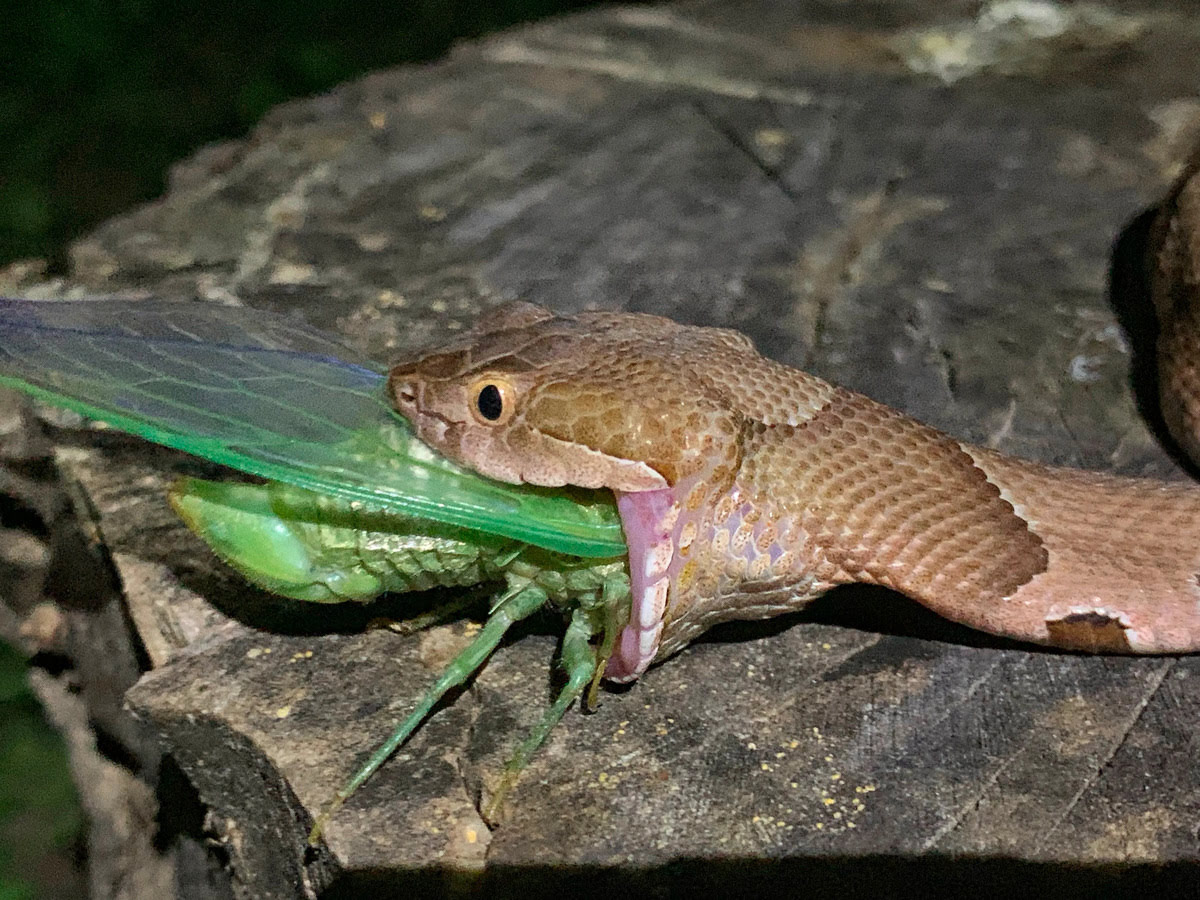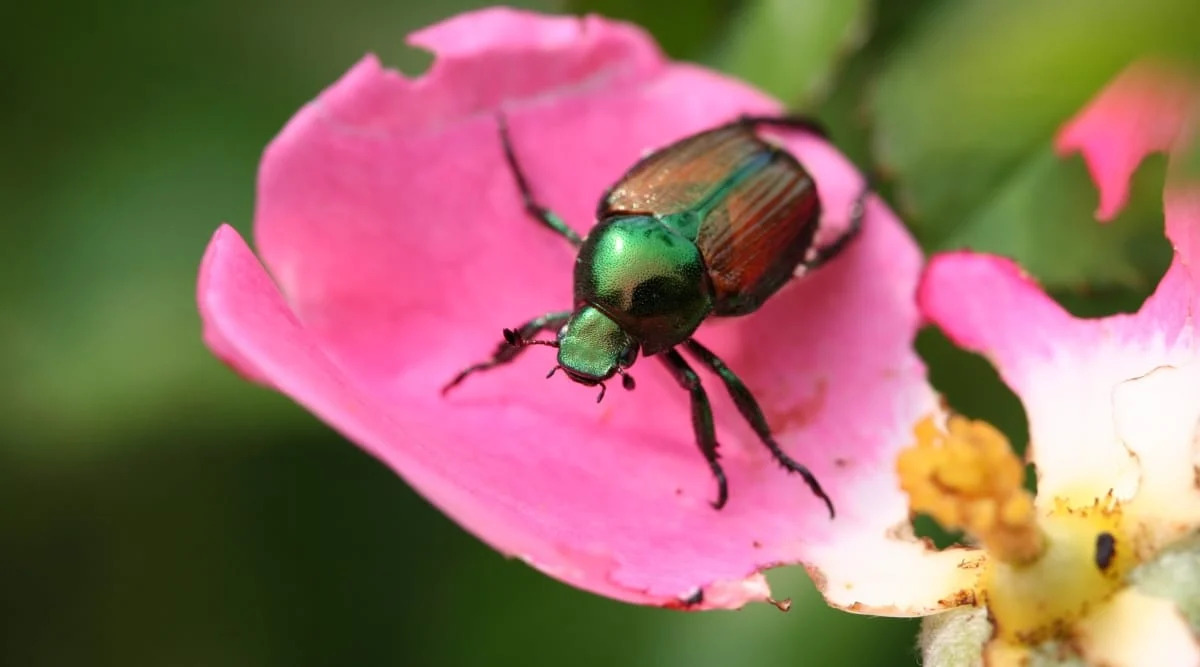Home>Gardening News and Trends>Latest News>Which Insects Eat Wood


Latest News
Which Insects Eat Wood
Published: December 10, 2023
Discover the Latest News on Which Insects Eat Wood. Learn about wood-eating insects and their impact on structures. Stay informed!
(Many of the links in this article redirect to a specific reviewed product. Your purchase of these products through affiliate links helps to generate commission for Chicagolandgardening.com, at no extra cost. Learn more)
Table of Contents
- Introduction
- The Importance of Wood-Eating Insects
- Types of Wood-Eating Insects
- Termites: The Most Well-Known Wood-Eating Insects
- Carpenter Ants: A Common Wood-Destroying Pest
- Powderpost Beetles: Masters of Wood Destruction
- Longhorned Beetles: Threats to Trees and Wooden Structures
- Wood Wasps: Efficient Wood Borers
- Wood-Eating Caterpillars: Surprising Lumber Consumers
- Wood Boring Weevils: Silent Wood Pests
- Conclusion
Introduction
Wood has been a vital material for humans for thousands of years. From construction to furniture to fuel, it has served many purposes. However, there are certain creatures that have a rather unique relationship with wood – they eat it. These insects, known as wood-eating insects, play a significant role in the natural world and can also pose a threat to our homes and infrastructure.
The ability of insects to consume wood is fascinating and often goes unnoticed. They possess specialized digestive systems and adaptations that allow them to break down and extract nutrients from this tough and resilient material. In this article, we will explore the world of wood-eating insects, uncovering their importance in ecosystems and examining the different types that exist.
It is important to note that not all wood-eating insects are pests. While some can cause significant damage to wooden structures, others play vital roles in decomposing dead wood and recycling nutrients back into the environment. By understanding the diversity of wood-eating insects, we can better appreciate the ecological complexity of these fascinating creatures.
We will delve into the habits, characteristics, and impacts of various wood-eating insects, including termites, carpenter ants, powderpost beetles, longhorned beetles, wood wasps, wood-eating caterpillars, and wood boring weevils. Through this exploration, we hope to shed light on the remarkable adaptations and behaviors of these insects.
Join us as we embark on a journey to discover the hidden world of wood-eating insects and gain a deeper understanding of their role in both the natural environment and our daily lives.
The Importance of Wood-Eating Insects
Wood-eating insects may not be the most glamorous creatures in the animal kingdom, but they play a crucial role in ecosystems around the world. Their ability to break down and digest wood serves several important functions.
One of the primary benefits of wood-eating insects is their role in the decomposition process. Dead trees and fallen logs provide a rich environment for a diverse range of organisms, including wood-eating insects. These insects aid in the breakdown of wood, accelerating the decomposition process and recycling nutrients back into the soil. This helps to replenish the nutrient cycle and create fertile ground for new vegetation to grow.
Wood-eating insects also provide an essential food source for other animals. Many bird species rely on wood-boring insects as a primary source of nutrition, particularly during breeding seasons when they need to feed their young. Woodpeckers, for example, are expert foragers, using their specialized beaks to drill into wood and extract insects. Without wood-eating insects, the food web in ecosystems would be adversely affected, leading to a decline in biodiversity.
Furthermore, the ability of wood-eating insects to break down and digest wood has crucial implications for carbon cycling. Wood is composed mainly of cellulose, a complex carbohydrate made up of chains of glucose molecules. When wood-eating insects consume and metabolize cellulose, they release carbon dioxide back into the atmosphere through respiration. This process helps to balance the carbon cycle and maintain a stable climate.
In addition to their ecological contributions, wood-eating insects also have economic significance. While some wood-eating insects are destructive pests that cause damage to wooden structures, they provide valuable insight into the weaknesses of building materials. By studying their behavior and understanding their feeding patterns, scientists and engineers can develop more robust and resilient construction techniques, leading to safer and more durable buildings.
Overall, wood-eating insects are far more than mere pests. They are integral components of ecosystems, participating in crucial ecological processes, supporting biodiversity, and contributing to carbon cycling. By recognizing the importance of these often-overlooked creatures, we can better appreciate the remarkable complexity and interconnectedness of the natural world.
Types of Wood-Eating Insects
Wood-eating insects come in a variety of forms, each with its own unique adaptations and behaviors. Let’s explore some of the most common types:
- Termites: Termites are perhaps the most well-known wood-eating insects. These small, social insects have a highly efficient digestive system that can break down cellulose, the main component of wood. They live in colonies, constructing intricate tunnel systems within wood to access food sources.
- Carpenter Ants: While carpenter ants do not eat wood, they can cause significant damage to wooden structures. These large, black ants excavate galleries within wood to create nests. They are attracted to damp, decaying wood and can weaken the structural integrity of buildings if left unchecked.
- Powderpost Beetles: Powderpost beetles are known for their ability to bore into wood and turn it into a fine powder. These small insects lay their eggs in cracks and crevices of wood, and the resulting larvae feed on the wood as they develop. They can cause extensive damage to wooden furniture, flooring, and structural timbers.
- Longhorned Beetles: Longhorned beetles are named for their long antennae, which can be as long as their bodies. These beetles lay their eggs in bark crevices or cracks in the wood, and the larvae bore into the wood to feed. They can be destructive to trees, as well as wooden structures such as furniture and buildings.
- Wood Wasps: Wood wasps, also known as horntails, have long, stinger-like appendages at the end of their abdomens. These insects bore into wood to create chambers where they lay their eggs. The wood wasp larvae feed on the wood, causing damage to tree trunks and tree branches.
- Wood-Eating Caterpillars: Some caterpillar species have adapted to consume wood as their primary food source. These larvae have strong mandibles and specialized digestive systems that allow them to break down and extract nutrients from wood. They can be found damaging the bark and branches of trees.
- Wood Boring Weevils: Wood boring weevils are small beetles with a distinct elongated snout. They burrow into wood to lay eggs, and the resulting larvae feed on the wood as they develop. They are known for their ability to infest wooden structures, including furniture, flooring, and wooden beams.
These are just a few examples of the diverse range of wood-eating insects that exist. While some are pests, causing damage to wooden structures, others contribute to natural processes such as decomposition. Understanding the different types of wood-eating insects is essential for effective pest management and conservation efforts.
Termites: The Most Well-Known Wood-Eating Insects
When it comes to wood-eating insects, termites often top the list. These remarkable creatures have earned a reputation for their ability to devour large amounts of wood, making them a significant concern for homeowners and property owners.
Termites live in highly organized and cooperative societies, with distinct castes that serve different functions. The workers, the largest caste, are responsible for gathering food and maintaining the nest. They have strong jaws and powerful digestive systems that allow them to break down cellulose, the main component of wood.
Unlike many other insects, termites cannot digest wood on their own. Instead, they rely on symbiotic microbes, such as bacteria and protozoa, present in their gut. These microbes produce enzymes that can break down cellulose into simpler sugars that termites can absorb and utilize as a nutrient source.
Termites construct elaborate tunnel systems within wood, using a combination of saliva, feces, and chewed wood particles to create their intricate galleries. These tunnels provide protection from predators and the outside environment, making it easier for termites to access their food source.
While termites are crucial for natural processes like decomposing dead wood in forests, they can wreak havoc when they infest structures made of wood. Subterranean termites, for example, can build mud tubes to bridge the gap between the soil and the wooden structure, allowing them to access their food source even in non-forested areas.
Termites are responsible for billions of dollars in property damage each year, affecting not only homes but also wooden furniture, infrastructure, and agricultural crops. Their silent and hidden nature often means that substantial damage can occur before the infestation is even detected.
There are various methods for termite control and prevention, including chemical treatments, physical barriers, and regular inspections. Early detection and prompt action can help mitigate the damage caused by termites and protect wooden structures from further infestations.
It is worth noting that not all termite species feed on wood. Some termites, called mound-building termites, construct large mounds out of soil, saliva, and feces, rather than consuming wood directly. These mounds provide a complex and unique habitat for many other organisms.
Understanding the biology and behavior of termites is essential for effective termite management. By addressing termite infestations and implementing preventive measures, homeowners and property owners can protect their investments and maintain the integrity of wooden structures.
Carpenter Ants: A Common Wood-Destroying Pest
When it comes to wood-destroying pests, carpenter ants are a common culprit. These large, black ants may not eat wood, but they can cause significant damage to wooden structures through their nesting behaviors.
Unlike termites, which consume wood as a food source, carpenter ants excavate galleries within wood to create their nests. They are attracted to damp, decaying wood, making buildings with moisture issues or wood in contact with soil particularly vulnerable to infestations.
Carpenter ants have strong jaws that allow them to tunnel through wood, creating pathways and chambers for their colonies. While they do not consume the wood, their excavation activities weaken the structural integrity of the wooden material over time. If left unchecked, carpenter ant infestations can cause serious damage to wooden beams, furniture, and other structures.
Identifying a carpenter ant infestation can be challenging, as they are nocturnal and tend to be more active at night. Signs of a carpenter ant infestation include the presence of wood shavings or frass (ant waste), large ants with wings (reproductive individuals), rustling noises within wooden structures, or the sighting of ant trails leading to and from the wood source.
To prevent carpenter ant infestations, it is important to address moisture issues and eliminate any potential entry points into the building. Keep firewood and other wooden materials stored away from the structure, and ensure that tree branches are trimmed to prevent contact with the building.
If an infestation is suspected, it is crucial to contact a professional pest control company experienced in dealing with carpenter ants. They can assess the extent of the infestation, locate the nests, and recommend appropriate treatment options.
Carpenter ants are a common and widespread wood-destroying pest, causing damage to both residential and commercial structures. Regular inspections, maintenance of proper moisture levels, and prompt action can help mitigate the risk of carpenter ant infestations and preserve the integrity of wooden structures.
Powderpost Beetles: Masters of Wood Destruction
Powderpost beetles are small wood-boring insects that have earned their name due to the fine, powdery frass they leave behind as they feed on wood. These insects belong to the family of beetles called Lyctidae, and they are notorious for their ability to cause extensive damage to wooden structures.
Powderpost beetle larvae are the main culprits behind the destruction of wood. Adult beetles lay their eggs in cracks and crevices of wood, and once hatched, the larvae burrow into the wood to feed. They prefer hardwoods such as oak, maple, and walnut, but can also infest softwoods like pine and fir.
As the larvae feed on the wood, they create intricate networks of tunnels that weaken the structure. Over time, the infested wood becomes weakened and crumbly, hence the name “powderpost” beetles. This damage can be particularly problematic in furniture, flooring, and other finished wood products.
Identifying a powderpost beetle infestation can be challenging, as the larvae remain hidden within the wood. However, signs of an infestation include the presence of small, round exit holes on the surface of the wood, along with the deposition of fine, powdery frass nearby.
Preventing powderpost beetle infestations can be challenging, as these pests can enter the wood before it even reaches the property. However, certain steps can minimize the risk, such as kiln-drying or heat-treating wooden products before use, sealing cracks and crevices in wooden structures, and storing wooden items in dry, well-ventilated spaces.
If an infestation is suspected, it is crucial to consult with a professional pest control company experienced in dealing with powderpost beetles. They can assess the extent of the infestation, locate the source, and recommend appropriate treatment options, which may include insecticidal treatments and fumigation.
Powderpost beetles are masters of wood destruction, capable of causing significant damage to wooden structures and products. Vigilance, proper storage and treatment of wood products, and prompt action are necessary to protect against these destructive pests and preserve the integrity of wooden materials.
Longhorned Beetles: Threats to Trees and Wooden Structures
Longhorned beetles are a diverse family of beetles characterized by their long antennae, which can be as long as or even longer than their bodies. While these insects come in a variety of shapes, sizes, and colors, they all share a common trait – their ability to cause damage to trees and wooden structures.
Longhorned beetles typically lay their eggs in bark crevices, cracks in the wood, or under loose bark. Once hatched, the larvae burrow into the wood, where they feed on the inner layers. As they grow, they create winding tunnels through the wood, causing structural damage and weakening the tree or wooden structure.
One well-known example of a longhorned beetle is the Asian longhorned beetle (ALB). Native to Asia, this invasive species has become a significant threat to trees in North America and Europe. The ALB can infest a wide range of tree species, including maple, birch, willow, and poplar, among others. If left uncontrolled, these beetles can devastate entire forests and urban tree populations.
In addition to their impact on trees, some longhorned beetles can also infest and damage wooden structures. For example, the old house borer beetle is known for its ability to attack softwoods such as pine, spruce, and fir, causing extensive damage to structural timbers, furniture, and other wooden items.
Despite their destructive potential, longhorned beetles also play a role in natural ecosystems. They contribute to the process of decay and nutrient cycling, breaking down dead wood and returning essential nutrients back into the environment. However, when their populations become unbalanced or they target valuable trees and structures, their presence can cause significant harm.
Preventing and controlling longhorned beetle infestations require a combination of measures. These include early detection through visual surveys, implementing quarantine measures in areas where invasive species are present, and practicing proper sanitation and removal of infested trees and wood products. In some cases, insecticidal treatments or biological control methods may also be utilized.
Education and public awareness are crucial in managing longhorned beetles. Early detection and reporting of suspected infestations can help authorities take swift action to prevent the spread and minimize the impact of these destructive pests.
Longhorned beetles serve as a reminder of the delicate balance between the roles they play in ecosystems and the threats they pose to trees and wooden structures. By implementing preventive measures and prompt intervention, we can help protect valuable resources and minimize the damage caused by these fascinating but potentially destructive insects.
Wood Wasps: Efficient Wood Borers
Wood wasps, also known as horntails, are a group of insects belonging to the family Siricidae. Although they are commonly referred to as wasps, they are not true wasps but are more closely related to sawflies. These fascinating creatures are known for their efficient wood-boring abilities and unique adaptations.
Wood wasps have an elongated body, with females often possessing a long, stinger-like appendage at the end of their abdomens. This appendage, known as an ovipositor, is used to drill into wood to create chambers where the females lay their eggs.
Wood wasps prefer to lay their eggs in dead or dying hardwood trees, as the wood in such trees is softer and easier to bore into. They use their ovipositors to inject their eggs into the wood, along with a secretion that helps soften the wood fibers, making it more suitable for their developing larvae.
Once inside the wood, the wood wasp larvae feed on the surrounding wood tissue. They have powerful mandibles that allow them to chew through the wood and obtain the necessary nutrients for growth and development. These larvae can spend several years feeding on the wood before they reach maturity.
While wood wasps are not considered pests in the same way as termites or carpenter ants, they can cause damage to the wooden components of trees. The burrowing activities of wood wasp larvae weaken the wood, making it more susceptible to decay and subsequent collapse.
Wood wasps also play a role in the process of wood decomposition. By burrowing into dead or dying trees, they create pathways for other decomposer organisms, such as fungi and bacteria, to enter the wood and aid in its breakdown. In this way, wood wasps contribute to the recycling of nutrients back into the ecosystem.
Although wood wasps may be intimidating in appearance, they are generally harmless to humans. The females possess an ovipositor, which may look like a stinger, but it is not used for defense or aggression. Male wood wasps do not have an ovipositor and are incapable of stinging.
Appreciating the role of wood wasps in ecosystems is important for understanding their ecological significance. While they may cause some level of damage to trees, they are also valuable components of the natural decomposition process, aiding in nutrient recycling and contributing to the overall balance of ecosystems.
It is crucial to conserve and protect dead or dying trees, as they provide essential habitats for wood wasps and other decomposer organisms. By preserving these trees, we can ensure the continued presence and ecological functions of wood wasps in our natural environments.
Wood-Eating Caterpillars: Surprising Lumber Consumers
When we think of caterpillars, we often imagine them feeding on leaves and plants. However, there are certain caterpillar species that have adapted to consume wood, making them surprising consumers of lumber.
Wood-eating caterpillars have evolved specialized adaptations that allow them to consume and digest wood. Their strong mandibles, coupled with enzymes in their digestive systems, enable them to break down and extract nutrients from the fibrous material of wood.
These caterpillars are typically found in forests, where they feed on dead or decaying wood. They play a crucial role in the process of wood decomposition, helping to break down and recycle organic matter back into the ecosystem.
One well-known example of a wood-eating caterpillar is the larvae of the wood-boring moth. The larvae of this moth tunnel through the wood, creating intricate galleries as they feed. While the infestation of these caterpillars can cause damage to wooden structures, their natural habitat is in dead or dying trees.
Other caterpillar species, such as the clearwing moth and the carpenterworm moth, are also capable of consuming wood. They tunnel into the wood as larvae, creating tunnels and chambers where they feed and pupate.
Wood-eating caterpillars are often overlooked and underestimated in the world of wood-eating insects. Their feeding habits and adaptations highlight the incredible diversity and resilience of caterpillars, as well as their important ecological function in wood decomposition.
It is worth noting that not all caterpillars that consume wood are considered pests. While some species can cause damage to wooden structures if they infest buildings, most wood-eating caterpillars are primarily found in natural habitats, playing a vital role in breaking down dead wood and recycling nutrients.
Understanding the ecological significance of wood-eating caterpillars can help us appreciate the balance of nature and the interconnectedness of various organisms within ecosystems. By preserving and protecting these habitats, we can ensure a healthy environment for these surprising lumber consumers and the delicate processes they contribute to.
Wood Boring Weevils: Silent Wood Pests
Wood boring weevils, also known as ambrosia beetles, are a group of small insects that can cause damage to a wide range of woody plants and trees. While they may not be as well-known as some other wood-eating insects, they are considered silent wood pests due to their hidden and often difficult-to-detect presence.
Wood boring weevils are named for their characteristic long snouts, which are used to bore into the wood. They lay their eggs inside tunnels or galleries that they excavate, usually in weakened or stressed trees. As the larvae hatch and develop, they feed on the wood, gradually causing damage to the tree.
Unlike other wood-eating insects, wood boring weevils do not feed directly on the wood. Instead, they rely on symbiotic fungi that grow in the galleries they create. The female weevils bring fungal spores with them as they bore into the wood, providing a food source for the growing larvae.
The damage caused by wood boring weevils can be subtle and difficult to detect until it is too late. Infected trees may exhibit symptoms such as wilting foliage, dieback of branches, or small holes on the bark. By the time these signs become noticeable, the beetles may have already caused significant damage to the tree’s vascular system.
One challenge in controlling wood boring weevils is their ability to attack a wide range of tree species. They are attracted to trees that are weakened by factors such as drought, disease, or root damage. Preventive measures, such as maintaining tree health and promptly addressing any signs of stress, can help reduce the risk of infestation.
When it comes to managing established infestations, targeted insecticide applications may be necessary. However, it is important to ensure that the treatment is specific to the type of weevil present and is performed by a knowledgeable professional.
Protecting wooden structures from wood boring weevil infestations also requires vigilance. Wood used in construction or furniture should be properly seasoned and treated to deter these pests. Regular inspections can help detect any signs of infestation and guide the necessary intervention.
Wood boring weevils remind us of the hidden threats that can lurk within the wood. Their silent presence and ability to exploit weakened trees highlight the importance of maintaining tree health and implementing preventative measures to safeguard both natural forests and man-made wooden structures.
Conclusion
The world of wood-eating insects is a fascinating and diverse one. From termites and carpenter ants to powderpost beetles and longhorned beetles, these creatures have unique adaptations and behaviors that allow them to consume and, in some cases, destroy wood. Understanding their role in ecosystems and their impacts on wooden structures is crucial for effective pest management and conservation efforts.
Wood-eating insects are not just pests; they play important ecological roles. They contribute to the decomposition process, breaking down dead wood and recycling nutrients back into the environment. They also provide a food source for other animals, such as birds and woodpeckers, contributing to biodiversity in ecosystems.
However, it is important to recognize that some wood-eating insects can cause significant damage to wooden structures. Termites, carpenter ants, powderpost beetles, longhorned beetles, wood weevils, and wood wasps can all pose threats to buildings, furniture, and other wooden items. Prompt identification, preventive measures, and effective pest control strategies are essential in mitigating the damage caused by these pests.
Preserving and protecting wood-eating insects’ natural habitats, such as maintaining healthy trees and forests, is also crucial. By understanding and respecting the balance between these creatures and our wooden structures, we can coexist with them in harmony.
In conclusion, the world of wood-eating insects is complex and multifaceted. From decomposing dead wood to damaging wooden structures, these insects play significant roles in ecosystems and human lives. By learning about their habits, characteristics, and impacts, we can better appreciate the remarkable adaptations and behaviors of these wood-consuming creatures and take necessary measures to protect our valuable wooden resources.
